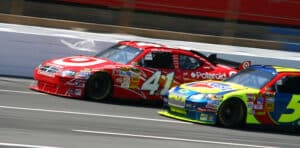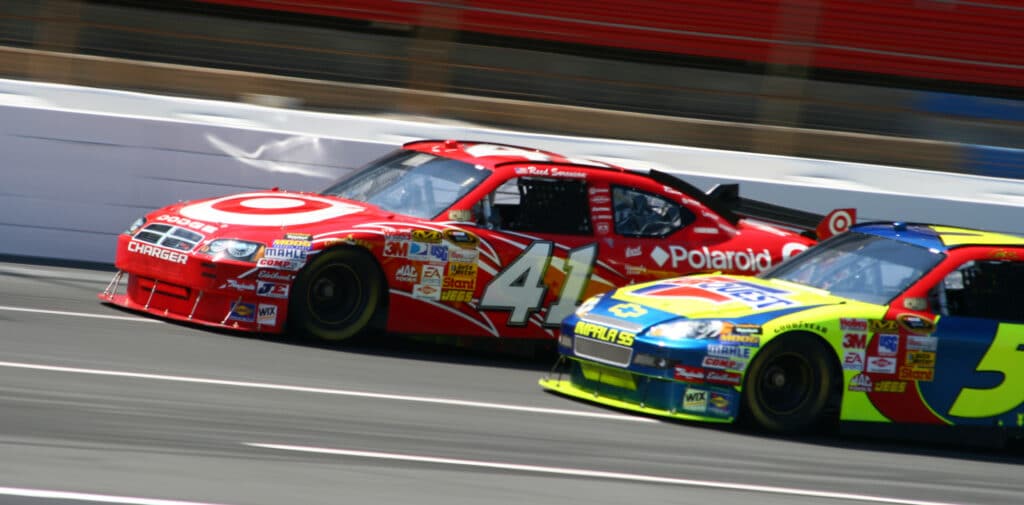No products in the cart.
History
From Checkered Flags to Championship Dreams: A History of Phoenix Raceway and the NASCAR Cup Series
 From Checkered Flags to Championship Dreams: A History of Phoenix Raceway and the NASCAR Cup Series
From Checkered Flags to Championship Dreams: A History of Phoenix Raceway and the NASCAR Cup Series
The Arizona desert isn’t just known for its scorching summers and stunning cacti. Nestled in Avondale, Arizona, lies Phoenix Raceway, a track that has roared to life with the thunder of stock car engines since the late 1980s. Its history with NASCAR’s premier series, the Cup Series, might be younger compared to some tracks, but it’s a story packed with exciting races, legendary drivers, and a growing legacy. Buckle up, race fans, as we take a checkered flag-waving journey through the history of Phoenix Raceway and the NASCAR Cup Series.
A Late Bloomer in the NASCAR Garden (1988):
Phoenix Raceway wasn’t always a NASCAR staple. Built in 1964, the track initially catered to open-wheel racing and sports cars. It wasn’t until 1988 that NASCAR came knocking, offering Phoenix a chance to join the big leagues. The inaugural Cup Series race, the “Checker 500,” was a late-season addition to the schedule. The excitement was palpable, with a then-record crowd of 60,000 packing the stands.
The race itself became a storybook moment. A young driver named Alan Kulwicki, known for his fiery passion and meticulous car preparation, took the checkered flag. It wasn’t just a win for Kulwicki; it was his first-ever Cup Series victory, etching his name in both Phoenix Raceway and NASCAR history. The crowd erupted in a frenzy, and Kulwicki celebrated with a now-legendary “Polish Victory Lap,” a nod to his heritage that cemented his place in racing lore.
Night Lights and a Second Shot (2005):
NASCAR recognized the potential of Phoenix Raceway. The track offered a unique low-banked tri-oval design, a challenge for drivers that often led to dramatic finishes. In 2004, NASCAR announced a game-changer: a second annual race weekend for Phoenix, starting in 2005. But there was a twist – the newly added race would be held at night.
This wasn’t just about aesthetics. Night racing offered cooler temperatures for drivers and fans alike, a welcome relief in the Arizona heat. To accommodate the switch, Phoenix Raceway underwent a significant renovation, installing state-of-the-art lighting. The inaugural night race was a roaring success, attracting a new wave of fans and showcasing the track in a whole new light (pun intended!). The addition of a night race not only enhanced the fan experience but also provided a significant economic boost to the state of Arizona.
The Rise of a Championship Contender (2020-Present):
The year 2020 marked a monumental shift in the NASCAR landscape. The prestigious NASCAR Championship Weekend, featuring the top three series (Cup, Xfinity, and Truck Series) races that determine the champions, needed a new home. Homestead-Miami Speedway, the long-time host, was relinquishing the crown. And who stepped up to the plate? None other than Phoenix Raceway.
This was a major vote of confidence for Phoenix. Becoming the championship battleground meant the track would be under the spotlight, with the fate of the entire NASCAR season resting on its asphalt. It was a challenge Phoenix Raceway readily accepted. Since 2020, the track has hosted the Championship Weekend, further solidifying its importance in NASCAR history.
More Than Just Stats: Phoenix Raceway’s Legacy
Sure, statistics tell a story. Kevin Harvick, a modern-day racing legend, holds the record for most Cup Series wins at Phoenix Raceway, a testament to his mastery of the track. But Phoenix Raceway’s legacy goes beyond numbers.
The track’s unique design pushes drivers to their limits, creating close battles and nail-biting finishes that leave fans on the edge of their seats. Remember the 2011 Cup Series race where Brad Keselowski edged out Carl Edwards in a photo finish so close it took multiple viewings to declare a winner? That’s the kind of drama Phoenix Raceway consistently delivers.
This track has also seen its share of heartbreak. In 2000, Dale Earnhardt, the sport’s most iconic driver, tragically lost his life in a last-lap crash at Phoenix Raceway. The event sent shockwaves through the NASCAR community, but it also sparked a renewed focus on driver safety. Today, Phoenix Raceway stands as a testament to both Earnhardt’s legacy and the unwavering commitment to safety in NASCAR.
A Story Still Being Written
The partnership between Phoenix Raceway and the NASCAR Cup Series might be young compared to some tracks on the circuit, but it’s a vibrant and evolving story.



